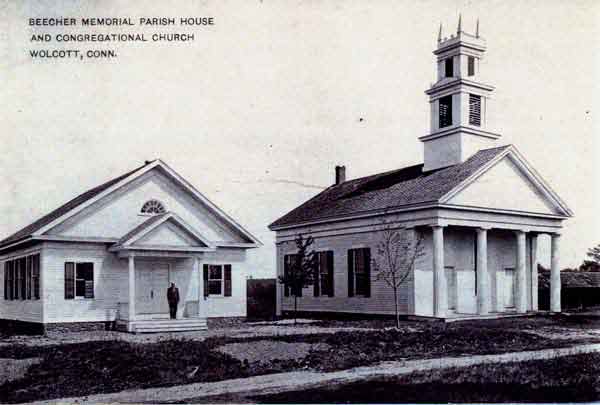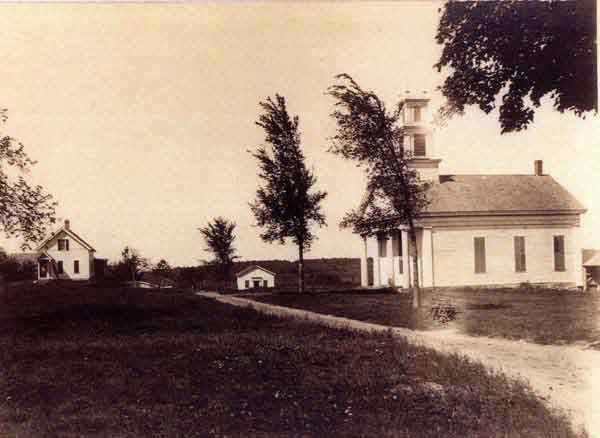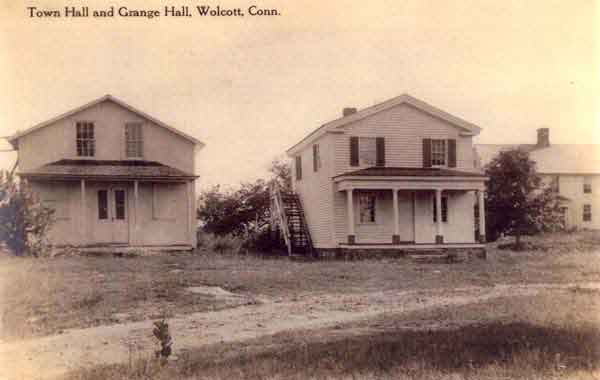|
|
||||||||||||
 |
 |
|
Wolcott Historical Society News - November 2008 By Florence Goodman When I think of an old New England town, I envision a church on a green surrounded by varied colonial structures. Wolcott is fortunate to have this quaint picturesque landscape to offer its residents who may enjoy such small-town traditions as town picnics and concerts on the green. My fondest memory of the green dates back to the mid-1950's when the Wolcott Library was housed in a single room at the Town Hall. My friend Nancy and I would take our weekly walk to the library then meet friends and socialize on the green for the afternoon. Elaine King, who served as the Town Clerk for 27 years, also remembered the town green as a childhood playground, growing up in one of the houses there. "The town used to be so peaceful, open and quiet," recalled King. "Everyone used to congregate on the green and people really felt a sense of a community..." Mrs. Mary R. Carter, known to many as Aunt Mary, was born in 1840 and had this to say about our town center. "There were two churches, a schoolhouse, two stores and a blacksmith shop forming the nucleus of the town center. On the west of the Congregational Church there was a pound, so called, where roaming cattle causing damage to property were confined until redeemed for the price of one dollar for each animal. Across the street to the south stood a little red schoolhouse. "The next house was the resident of the storekeeper. Then came the post office and general store. Next came Selden Baily's house and blacksmith shop. Then there was the large old-fashioned house of Jonathan Bement. Adjoining was William Welton's drug store, then a little red house occupied by a spinster lady with an obsession of picking up small pieces of glass in the roadway, fearful for the bare feet of the school children. Then came the Episcopal Church. Mr. Benhan, partner in the Benham and Tuttle Store occupied the next house. Just north was Mr. Tuttle's home. On the east was the dwelling of Clark Bronson, the mail carrier, who went to Waterbury every Saturday for the mail." It is evident that memories of the green span centuries. Prior to the building of the first meeting house, the original northern portions of the green, including the present site of the Congregational Church and parsonage, were reserved for use as a commons by the town's early settlers. On June 8, 1772, Joseph Atkins granted two acres of land for the site of the Congregational Church and a green for the church. In 1801 Charles Upson gave the eastern portion of the green to the town. Michael Harrison in 1800 and Asaph Hotchkiss in 1808 gave the remaining portions of the green to the town. Today the green features several lampposts, large maple trees, and an evergreen tree that is decorated to welcome in the holiday season. In 1916 a granite monument depicting a Civil War soldier that was erected in the center of the green. This monument was dedicated to the veterans of the Revolutionary War, the War of 1812, and the Civil War and was presented to the town by Leverette D. Kenea of Wolcott. In the latter part of the 20th Century, two more monuments were placed on the green, one to the east and one to the west. On the western side, the monument called Wolcott's Pride was dedicated to those who served in Operation Desert Storm. On the eastern side, the granite oblique was dedicated to the soldiers of WWI, WWII, Korean, Vietnam, and Persian Gulf Wars. A granite plaque remembering the victims of September 11th was presented by the Wolcott Lions Club. A white gazebo donated by the Farmingbury WomenÕs Club can also be found on the green along with several park benches. Although our town center still holds its historic charm, it has changed dramatically from the mid-1800s. The town green is a triangular-shaped park that is bordered by Kenea Avenue, Boundline Road, and Center Street. Many of those same structures that "Aunt Mary" mentioned are still situated around the green, but some have been destroyed or transformed with the changing of time. In my next article, I will expound on the history of each of the existing structures that are found encompassing our town green. (Much of the information for this article was taken from The 1986 Historic Resources Inventory by J.P. Loether, The Meeting House Atop of BensonÕs Hill by John Washburne, and OrcuttÕs History of the Town of Wolcott From 1731 to 1874.) Please support our Holiday House Tour to be held on December 13. Tickets will be sold at the Congregational Church Gifts & Green Fair the weekend before the tour. You may also buy tickets on the day of the tour at the Schoolhouse Museum. For information, call Flo Goodman or visit our Web pages at (http://www.wolcotthistory.org/). You can download a membership application there. Our meetings are held on the first Thursday of each month at the Old Stone School on Nichols Road at 6:30 P.M. During the winter months, we do cancel because of bad weather. Anyone interested in visiting the Old Stone School Museum, please call Loretta Leonard at 879-4310 or Flo Goodman 879-9818.
Beecher Memorial Parish House and Congregational Church
Church and Schoolhouse
Town Hall and Grange Hall
Town Green To view past installments of the Wolcott Historical Society News, click here. |
|
|
[Home]
[News]
[Purpose]
[Calendar]
[Museum]
[Membership]
[History]
[Contacts]
[Links]
All material at Wolcott Historical Society Web sites Copyright © 2000-2010 Wolcott Historical Society |



